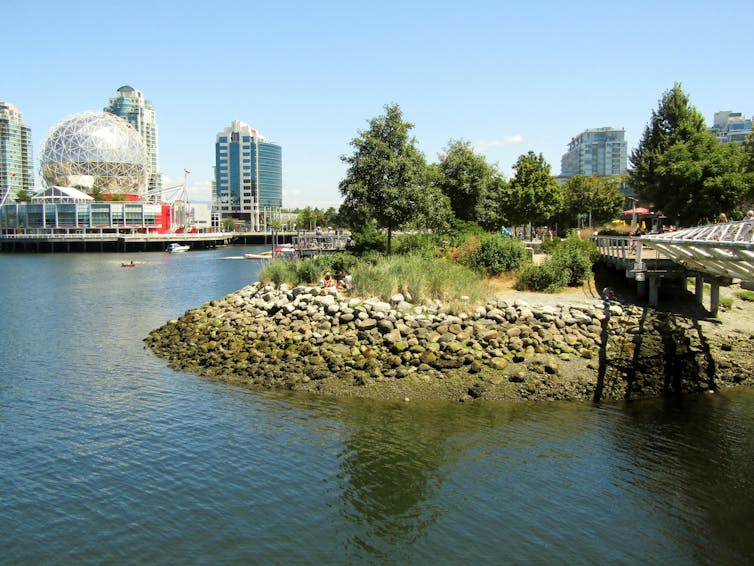Source: The Conversation – UK – By Simone Abram, Professor in the Department of Anthropology, Director of Durham Energy Institute, Durham University

Thousands of new electricity pylons are to be built across parts of England under the government’s plans to decarbonise the electricity. And some people aren’t happy.
A glance at recent Daily Telegraph articles seem to suggest most of the genteel English countryside is about to be taken over by evil metal monsters. Headlines talk of “noisy” pylons set to “scythe through” “unspoiled countryside”, leading to a “pylon penalty” for house prices and even “mass social unrest”.
While some of the stories are rather over the top, they reflect a genuine unease, and there have been significant campaigns against pylons. In Suffolk, for instance, resistance is building against plans for a 114-mile-long transmission line connecting new offshore wind farms to Norwich and beyond.
So why do these towering steel structures evoke such powerful feelings?
Get your news from actual experts, straight to your inbox. Sign up to our daily newsletter to receive all The Conversation UK’s latest coverage of news and research, from politics and business to the arts and sciences.
Pylons have had a particular fascination since they were first introduced in the 1920s. Even then, the biggest challenge was to get “wayleaves” (permission) to cross farmland. To calm rural protest groups, the government’s electricity board commissioned an architect, Reginald Blomfield, to design transmission towers with an eye to “visual amenity”.

Smith Archive / Alamy
In the most protected areas, expensive underground cabling was used to hide the transmission lines altogether. The board used its copious marketing materials to emphasise that this option was around six times more expensive, and therefore only for exceptional use. By the 1940s pylons were much cheaper than underground cables, providing a techno-economic rationale that remains politically persuasive today.
Why we love the countryside
One reason pylons are so controversial is related to a particularly English fascination with landscape. The geographer David Matless wrote some years ago of the “powerful historical connection” between Englishness and a vision of its countryside. People feel a degree of ownership over a varied landscape, encompassing lowland and upland, north and south, picturesque and bleak, and often have strong opinions about what “fits”, what constitutes “heritage” and what is “out of place”.
Even if most of England is privately owned and commercially farmed, many people still imagine the land as a public good tied to national sentiments and see pylons as intruders in the landscape.

Martin Charles Hatch / shutterstock
This could also explain why proposals to build infrastructure across the English countryside often provoke significant objections. My research on planning in the Home Counties (the areas surrounding London) back in the 1990s revealed a very determined population of well-educated and well-resourced people willing to spend significant amounts of time and money ensuring that the landscape met their expectations.
Concerted efforts had seen off a proposal from the then Conservative government to build a motorway through the Chiltern Hills to the west of London, for example.
There were, and still are, innumerable village groups willing to turn up to public enquiries and to pay lawyers to launch appeals and legal challenges. They may have been sceptical of the more grungy road protesters (historically embodied by the indomitable Swampy), but there was certainly common purpose.
My conclusion at the time was never to underestimate the effectiveness of local action where people’s vision of the English countryside was challenged. More recently, plans to run the HS2 rail line through those same hills ran into fierce local opposition, which prompted significant redesigns.
That’s all well and good, but today we face catastrophic climate change and biodiversity loss. Wind turbines are one of the most effective ways to decarbonise electricity supplies, but they are in different places from the old coal and gas power stations. Ironically, the same love of landscape that pushed wind farms out to sea now fuels opposition to the cables that bring the power back to land.
Democratic decisions?
One of the challenges here is that decisions over things like high-voltage transmission lines are based on models that seek to “optimise” the design of equipment, on the basis of cost or effectiveness, or both. These models have no way to account for landscape and heritage value or aesthetics and should never be the sole basis for decisions about infrastructure.
Running pylons across Suffolk might be the cheapest route with least electrical loss, but is it the best option? What would the alternatives be? Starting the discussion from the basis of techno-economic modelling often preempts a properly balanced debate.
This isn’t an argument for or against big pylons. It’s a call for more democratic planning and not less.
Studies consistently show that people resent being excluded from decisions that reshape their landscape and environment. Planning is a political process, and in any such process, humiliating your opponent rarely leads to long-term harmony.
Top down decisions about “national infrastructure” may save time on paper but are not a good way to make progress. It appears autocratic and shifts objectors onto the streets or into the courts.
Real consultation takes time and effort. But it builds trust and leads to better outcomes.
Maybe pylons are the least-worst option. Maybe not. But we won’t know unless we ask – and listen.
Don’t have time to read about climate change as much as you’d like?
Get a weekly roundup in your inbox instead. Every Wednesday, The Conversation’s environment editor writes Imagine, a short email that goes a little deeper into just one climate issue. Join the 45,000+ readers who’ve subscribed so far.
![]()
Simone Abram receives funding from EPSRC for research on integrated energy systems and equality, diversity and inclusion in energy research. She received funding from the Norwegian Research Council for research on socially-inclusive energy transitions. Her Chair is co-funded by Ørsted UK but she does not represent the company in any way and any views expressed here remain independent.
– ref. ‘Pylon wars’ show why big energy plans need locals on board – https://theconversation.com/pylon-wars-show-why-big-energy-plans-need-locals-on-board-258877









